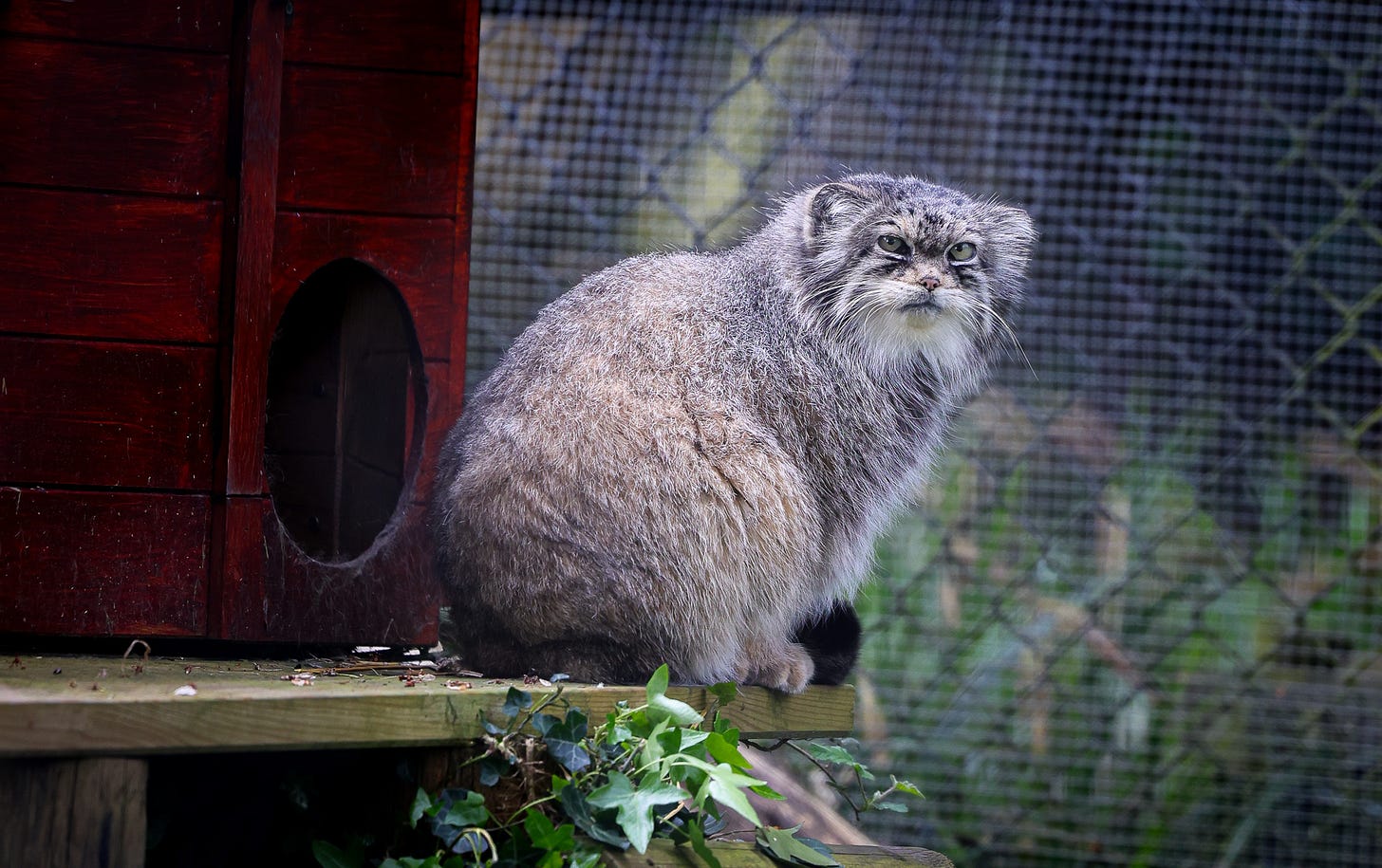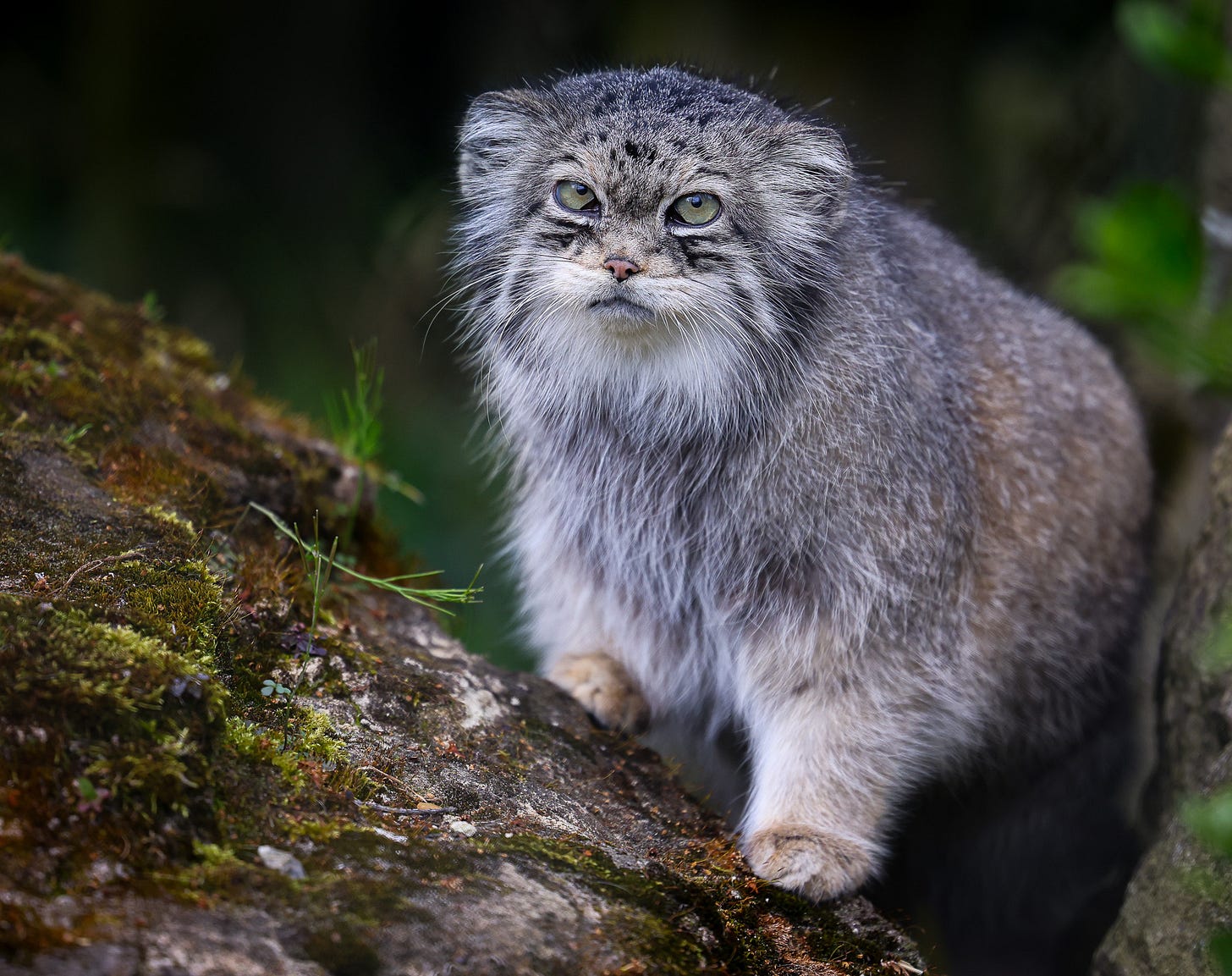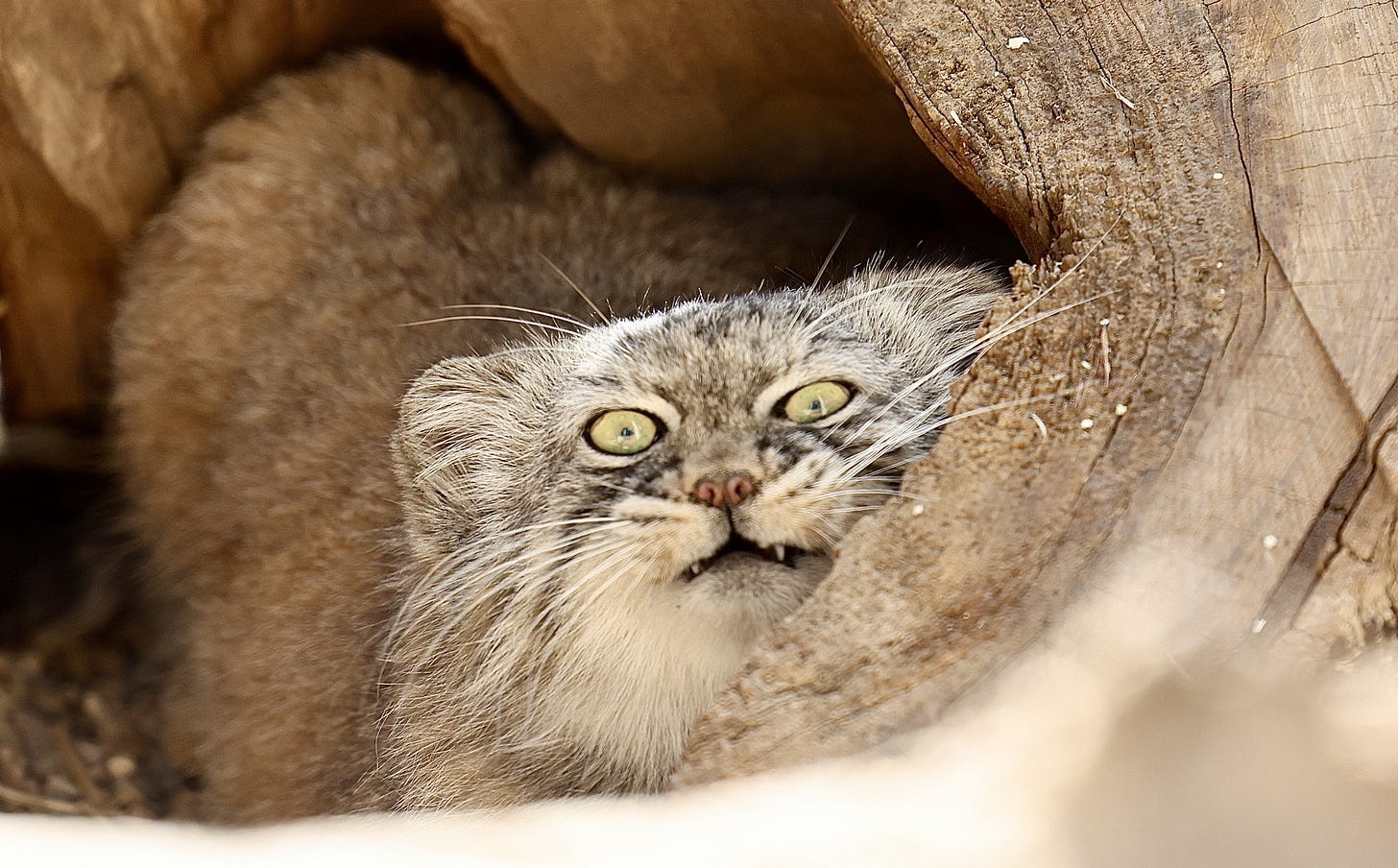Fresh off the celebration of International Pallas’s Cat Day, today I want to shine a light on an issue that profoundly impacts the conservation of these glorious felines in zoos worldwide: Toxoplasmosis. To give this topic some life, allow me to introduce a remarkable manul from Howletts Wild Animal Park — Jochi — not just for his adorable face and charismatic presence, but because he's become something of an ambassador for raising awareness about this threat.
Toxoplasmosis is caused by the parasite Toxoplasma gondii, an organism adept at infecting warm-blooded animals, from birds to mammals — including humans. Approximately one-third of humans globally are chronically infected with Toxoplasma, carrying the parasite for life, typically in a dormant state. While usually asymptomatic, acute toxoplasmosis can lead to flu-like symptoms in people, and in some cases severe health complications, especially among those with compromised immune systems.
Unfortunately, manuls are far less equipped to handle this parasite. Their susceptibility is alarmingly evident in captive breeding programs, where toxoplasmosis mortality rates among young manuls are distressingly high. At Vienna's Schönbrunn Zoo, between 1998 and 2002, nearly 58% of manul kittens succumbed to acute toxoplasmosis, and similarly, Denver Zoo saw around 35% of kittens lost to the disease. Why is this happening?
The prevailing theory of researchers and institutions like Howletts and Port Lympne Wild Animal Parks is that manuls, adapted to isolated, rugged habitats, historically faced minimal exposure to Toxoplasma and thus evolved few defenses against it. Captive settings can inadvertently increase infection risk through contaminated food, water, or even accidental human-mediated exposure. Indeed, according to Port Lympne Zoo, over 80% of the world’s adult captive manuls are chronically infected with toxoplasmosis.
Ecologically, Toxoplasma gondii spreads primarily through ingestion of contaminated food, water, or soil containing the parasite's oocysts, often originating from infected feline hosts, particularly domestic and wild cats. Cats are the only known definitive hosts where Toxoplasma can complete its life cycle, shedding infectious oocysts into the environment. Interestingly, the parasite may influence host behavior; some studies suggest humans infected with Toxoplasma could exhibit altered behaviors, such as increased affinity for cats—giving rise to cultural stereotypes like the so-called "crazy cat person" phenomenon, though this hypothesis remains an active area of research.
The good news — and there is good news — is that dedicated conservationists have found ways to combat this threat. Since 2014, Howletts and Port Lympne implemented targeted prophylactic treatments using clindamycin. This approach dramatically reduced kitten mortality rates from 71.6% to just 5.9%. Additionally, because stress significantly reduces immune resilience and can activate latent infections, maintaining calm, stress-free environments has proven crucial in mitigating outbreaks.

According to Port Lympne, this combined approach of targeted medication and careful environmental management has now been incorporated into European husbandry recommendations, offering hope that future generations of captive manuls will face far brighter prospects.
As for wild manuls, studies have indeed detected Toxoplasma gondii infections in their native ranges, including Mongolia. Although infections appear less prevalent and impactful in the wild due to lower population density and fewer opportunities for transmission, the presence of the parasite raises important questions about conservation strategies. Ongoing research and monitoring remain essential to fully understand potential risks to wild populations and to ensure effective conservation practices.
Let’s return now to where this story began: with Jochi, the 8-year-old manul living at Howletts Wild Animal Park in the U.K. Jochi is the sole member of his immediate family that survives — a family that struggled with toxoplasmosis at a young age. It’s the treatment developed at Howletts and Port Lympne that is credited with saving Jochi’s life. As a manul, Jochi isn’t so unusual — he’s shy and timid, and may often opt to stay concealed, either within the canopy of trees in his exhibits or in his red barn-house. But he has a unique charm about him, with a simultaneously grumpy and irresistibly sweet baby-face and distinctly innocent eyes.
Addressing toxoplasmosis is an ongoing challenge, demanding vigilance, research, and coordinated conservation efforts. Thanks to international collaboration and advances in veterinary care, the outlook for manuls in captivity is improving. With continued research we can help ensure a thriving future for manuls, both in human care and across their native steppe habitats.
In other news…
I’ve just returned from a 2,500-mile pilgrimage to celebrate International Pallas’s Cat Day — a journey that took me to four different zoos and brought me face-to-face with some truly unforgettable manuls. Among the many highlights: meeting Tashi, Pazi’s little brother; the charismatic Eevie, one of Tiina’s daughters; and Fin, a Finnish-born manul from Korkeasaari Zoo who’s now leaving his mark on the U.S. breeding program.
This adventure — and the thousands of photos and videos I can’t wait to sort through — was made possible thanks to the incredible support of my paid subscribers. Thank you so much for helping fuel these journeys and for being part of this growing manul-loving community. I’m excited to bring you new faces, new stories, and plenty of exciting content very soon!
If you enjoy this work and want to support me — and manul conservation efforts — please consider becoming a paid subscriber. Every subscription directly supports pilgrimages like this but also broader conservation efforts to protect these remarkable cats.






